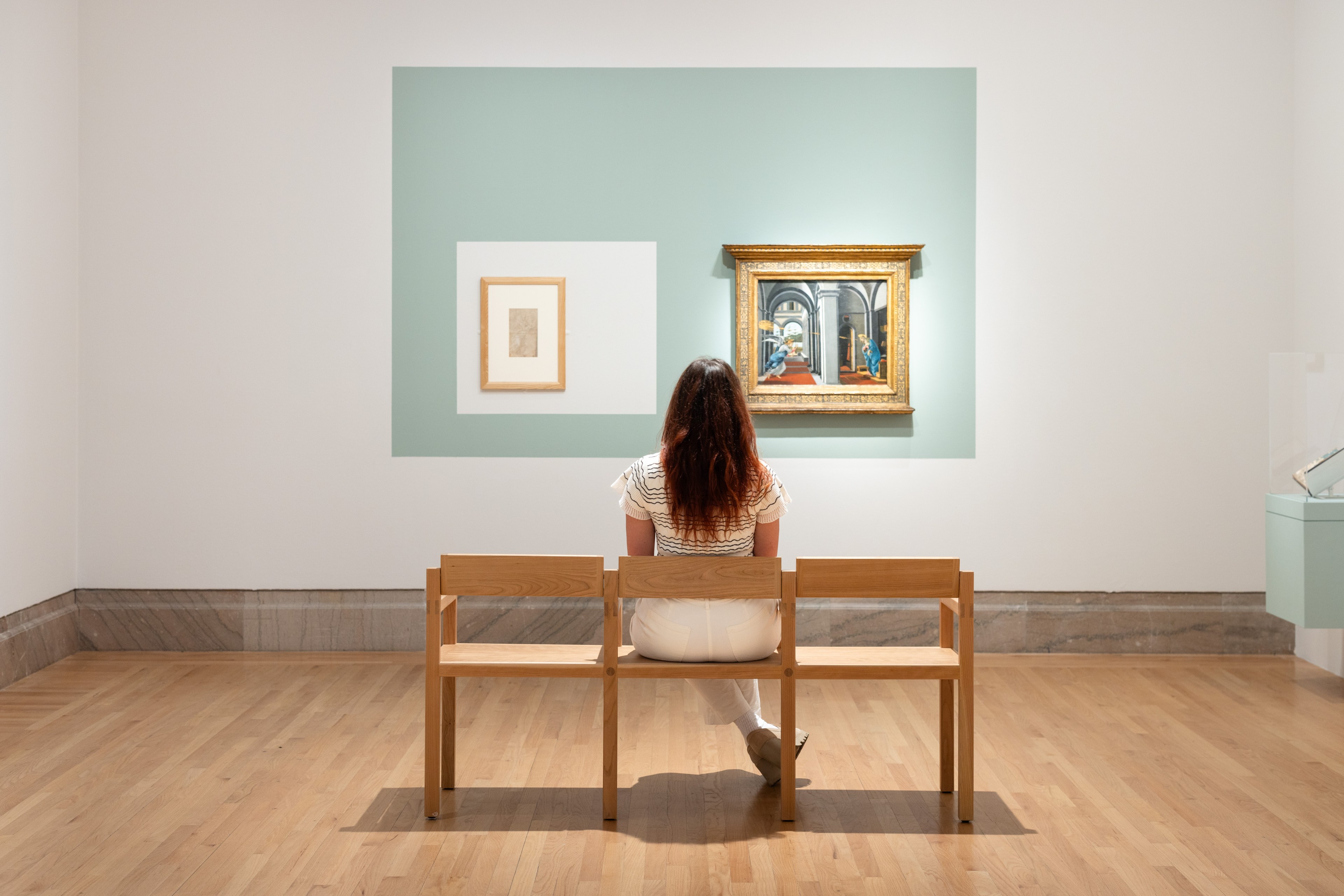Sandro Botticelli’s name has become synonymous with the Renaissance—his last name, anyway—and his circa-1480s painting The Birth of Venus is so famous it’s spawned its own artistic ecosystem, much in the way that Edvard Munch’s The Scream and Vincent Van Gogh’s The Starry Night decorate countless college dorms. It all begs the question: With a figure this renowned, what more is left to say?
Yet there’s still a lot to learn about the Renaissance master, as a new exhibition at San Francisco’s Legion of Honor proves. “Botticelli Drawings” is the first to focus on the artist’s drawings and includes more than 60 works from 39 institutions, including many pieces that have never before left their homes.
The museum sets out to offer a deeper portrait of Botticelli, thanks to what is the largest-ever collection of his drawings in one place. The concentration promises a much more direct and fresh understanding of the artist, said Furio Rinaldi, curator of prints and drawings at the museum.
Yet the exhibition also includes paintings—like the ethereal, complex composition of The Nativity of Christ (Mystic Nativity), Botticelli’s only signed and dated painting, itself worthy of hours of gazing. Others, like Virgin and Child With the Young Saint John the Baptist, are on view as they never have been before.
“It’s better than the Louvre,” Rinaldi said.
The painting hangs high in the Parisian museum, making it difficult to take in its fine details—ones you appreciate all the more after studying Botticell’s drawings. Similarly, the round painting Virgin and Child With Saint John the Baptist and Six Singing Angels, is also visible at the Legion of Honor in a way not possible in its usual home of the Galleria Borghese, where it has a lot of competition from other artworks.
Rinaldi has been working on the exhibition since 2020, piecing together a body of work that has never before been collected and includes an unprecedented 11 loans from Florence’s Gallerie degli Uffizi. The exhibition also includes “Battle of the Nudes,” the first signed print of the Italian Renaissance.
The loss of Botticelli’s work began upon his death in 1510 when his family rejected his inheritance because they didn’t want to take on the painter’s debts. Dying alone, penniless and in virtual oblivion, the Renaissance painter was virtually unknown for centuries until his rediscovery in the late 19th century.
The exhibition opens with high-definition projections of Botticell’s drawings, and the first room focuses on the artist’s apprenticeship with the Fra Filippo Lippi, a favorite of the Medici. Lippi’s influence—and Botticelli’s talent—is clearly evident in the finely detailed depictions of fabric and light.
There’s another room dedicated to Botticelli’s portraits—he was the most prolific and requested portrait drawer of the Renaissance, Rinaldi said, in part for his ability to combine realism with stylization. “Botticelli Drawings” gathers together all his surviving head studies for the first time, and it also has on display “Portrait of a Lady at the Window,” his first portrait in which the sitter gazes forward instead of to the side, revolutionary at the time.
But the best is yet to come—a grand finale in the form of Botticiell’s unfinished Adoration of the Magi painting, for the first time reunited with three of its preparatory drawings, a unique opportunity to see the painter’s artistic process, allowing for an unprecedented understanding of the artist.
“For once, one doesn’t have to go to Florence to see Botticelli,” Rinaldi said.
Botticelli Drawings
📍 Legion of Honor, 100 34th Ave., SF
🗓️ Nov. 19-Feb. 11
🔗 famsf.org
